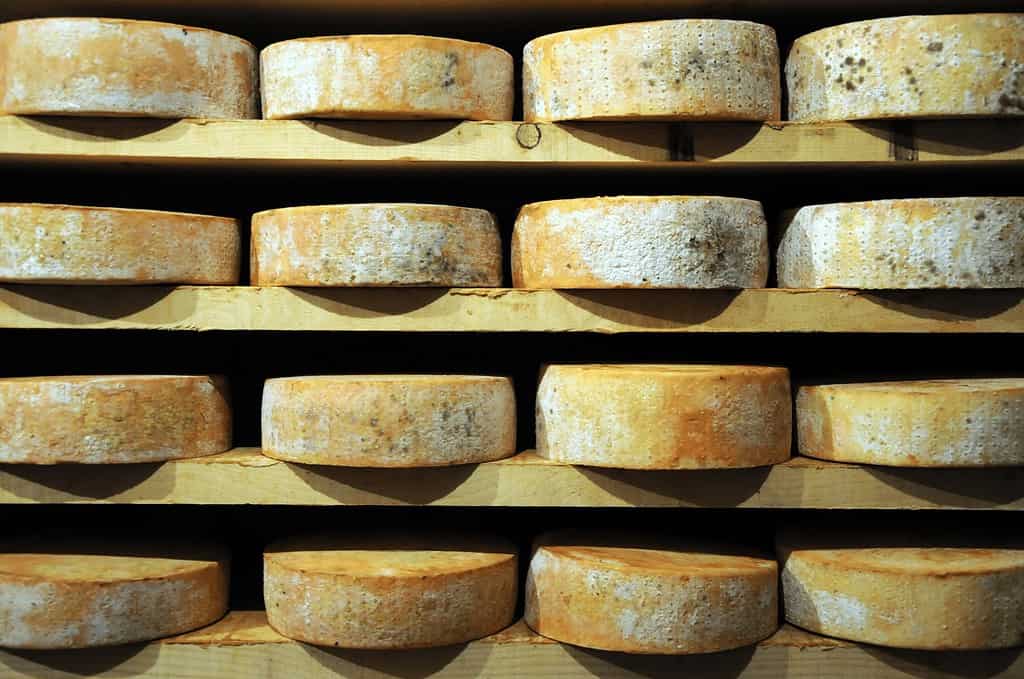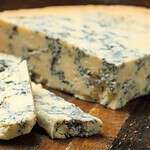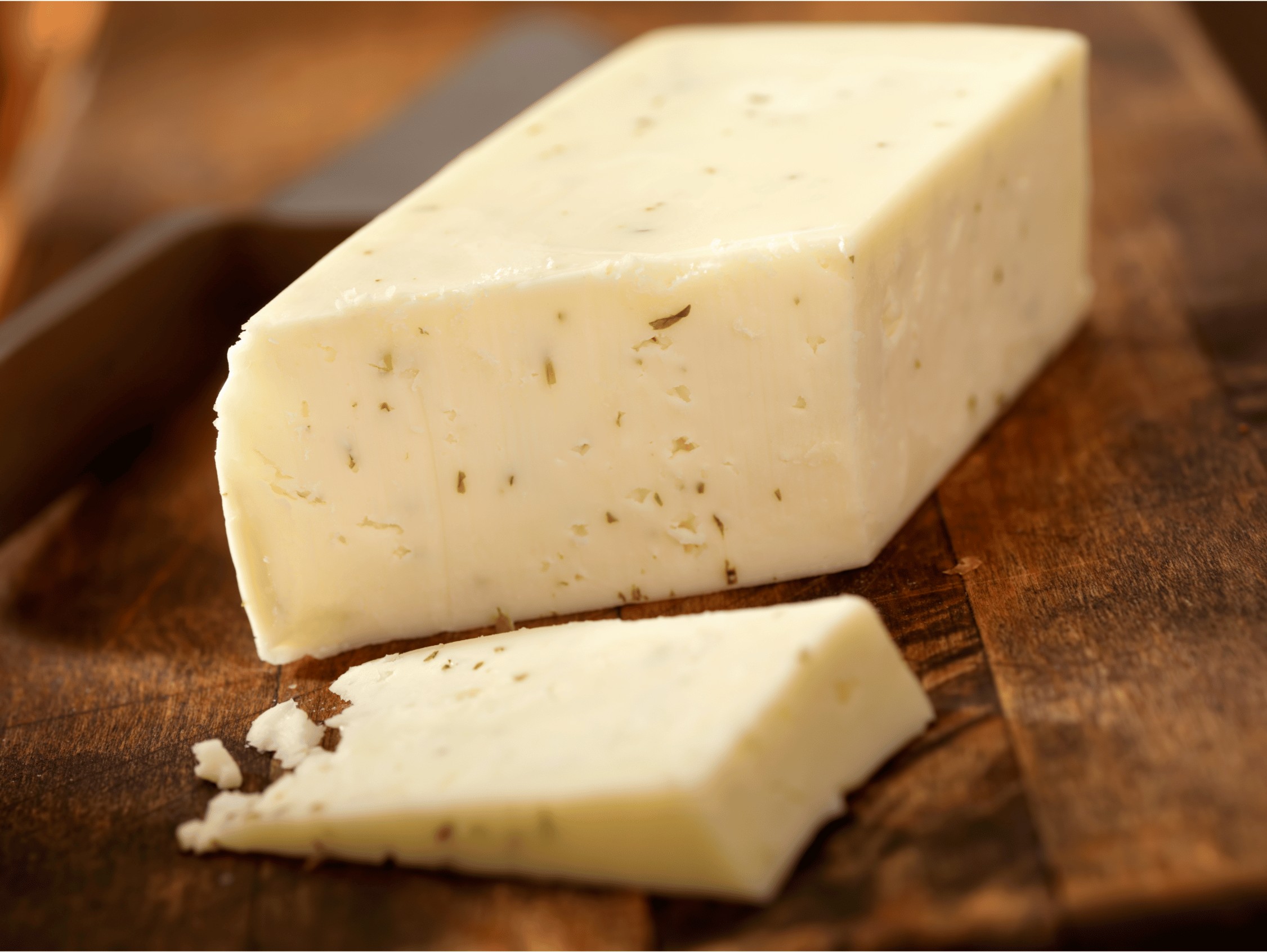Fontina cheese, a staple of Italian cuisine, has a rich history that dates back to the 12th century. Traditionally produced in the Aosta Valley region of Italy, this semi-soft cheese is renowned for its creamy texture and nutty flavor. It is made from cow’s milk and is most often recognized by its orange-brown rind and soft, dotted interior.

In terms of production, Fontina cheese undergoes a detailed process that contributes to its distinct taste and versatility in cooking. The cheese is aged for a minimum of three months, a period during which it develops a mild, but distinct, flavor profile, making it suitable for a wide array of dishes. Over time, various countries have created their own versions of Fontina, each with unique characteristics, but the original Italian variant remains the benchmark for quality.
Fontina cheese is not only appreciated for its culinary uses but also for its nutritional benefits. It is a good source of protein and calcium, and when consumed in moderation, can be part of a healthy diet. Proper storage is important to maintain its quality; it should be kept in a cool, humid environment and wrapped to prevent drying out.
Key Takeaways
- Fontina cheese is a traditional Italian cheese with a creamy texture and a nutty flavor.
- The cheese is versatile in cuisine and has variants produced in different countries.
- It offers nutritional benefits and requires proper storage to maintain its quality.
The Origins and History of Fontina Cheese
Fontina cheese has a rich heritage tied to the Aosta Valley in northern Italy, with historic roots in the Alps that shape its unique characteristics. This cheese is renowned for its distinct flavor and a rigorous aging process that adheres to strict regional standards.
Geographical Significance
The Aosta Valley region of Italy is not only the birthplace but the exclusive production zone of true Fontina cheese. The region’s geographical location in the Alps provides ideal conditions for dairy farming and cheese production, thanks to the temperature, altitude, and flora which contribute to the unique flavor profile of the cheese.
- Location: Aosta Valley, Northern Italy
- Environment: Alpine
- Influence on Fontina: Terroir contributes to taste
Historical Background
Fontina cheese boasts a legacy dating back to the 12th century. Historical documents from 1270 CE first mention Fontina in the accounts of the House of Savoy, evidencing a long-standing tradition of cheese-making in the Aosta Valley. An essential ingredient in traditional Italian dishes, Fontina’s heritage has been maintained by local farmers and artisan cheesemakers throughout the centuries.
- First Mention: 1270 CE
- Historic Importance: Staple in local cuisine
Fontina DOP Certification
In 1955, Fontina was awarded the DOP (Denominazione di Origine Protetta) certification by the European Union, acknowledging its unique association with the Aosta Valley. This certification ensures that all aspects of its production, from milk sourcing to aging, conform to precise standards.
- Certification Year: 1955
- EU Recognition: DOP (Denominazione di Origine Protetta)
- Standards: Specific to Aosta Valley production
Cultural Relevance
As a cornerstone of Italian cheese culture, Fontina embodies the gastronomic identity of the Aosta Valley and Northern Italy. It plays a pivotal role in local traditions and cuisine, especially in fonduta, a fondue-like dish cherished in the region. Fontina’s influence extends across Europe and into global culinary practices.
- Key Dish: Fonduta
- Role in Cuisine: Emblematic Italian cheese
Through understanding the deep-seated origins and cultural import of Fontina cheese, we appreciate this Italian culinary treasure even more. The Aosta Valley continues to be the guardian of its exceptional quality and time-honored production techniques.
Production and Characteristics
In this section, we will explore how Fontina cheese is produced, from its initial cheese-making process to the development of its distinct characteristics that cheese enthusiasts cherish.
Cheese-Making Process
Fontina cheese begins its journey with high-quality unpasteurized milk, often from cows that graze on lush, mountain grass. To create the curd, rennet and bacteria are added to the milk, causing it to coagulate. The curd is then cut into small pieces to release the whey, a step crucial in defining Fontina’s texture. Once the curd reaches the desired consistency, it is placed into molds and pressed to shape the cheese.
Aging and Texture Development
The aging process is pivotal to achieving the classic Fontina semi-soft texture. During aging, the cheese develops small holes and a creamy but somewhat hard consistency. This balance of texture is attained through a precise aging period, typically ranging from three months to over a year, depending on the desired hardness. The natural rind forms and contributes to the overall character of the cheese.
Physical Appearance
Fontina cheese is easily recognized by its pale yellow color and small holes that are scattered throughout. It sports a natural rind that darkens as the cheese ages. When sliced, its interior showcases a creamy and semi-soft texture, inviting one to savor its richness.
Distinguishing Flavors
The flavors of Fontina cheese are as rich and complex as its production process. Aged Fontina takes on a pronounced nutty flavor with an earthy undertone, complemented by a subtle sweet flavor. Its richness is layered with notes of earthiness, a characteristic that enhances its compatibility in melted dishes. The nutty and earthy notes are more pronounced in cheeses made from the milk of cows that graze on natural pastures.
Culinary Uses
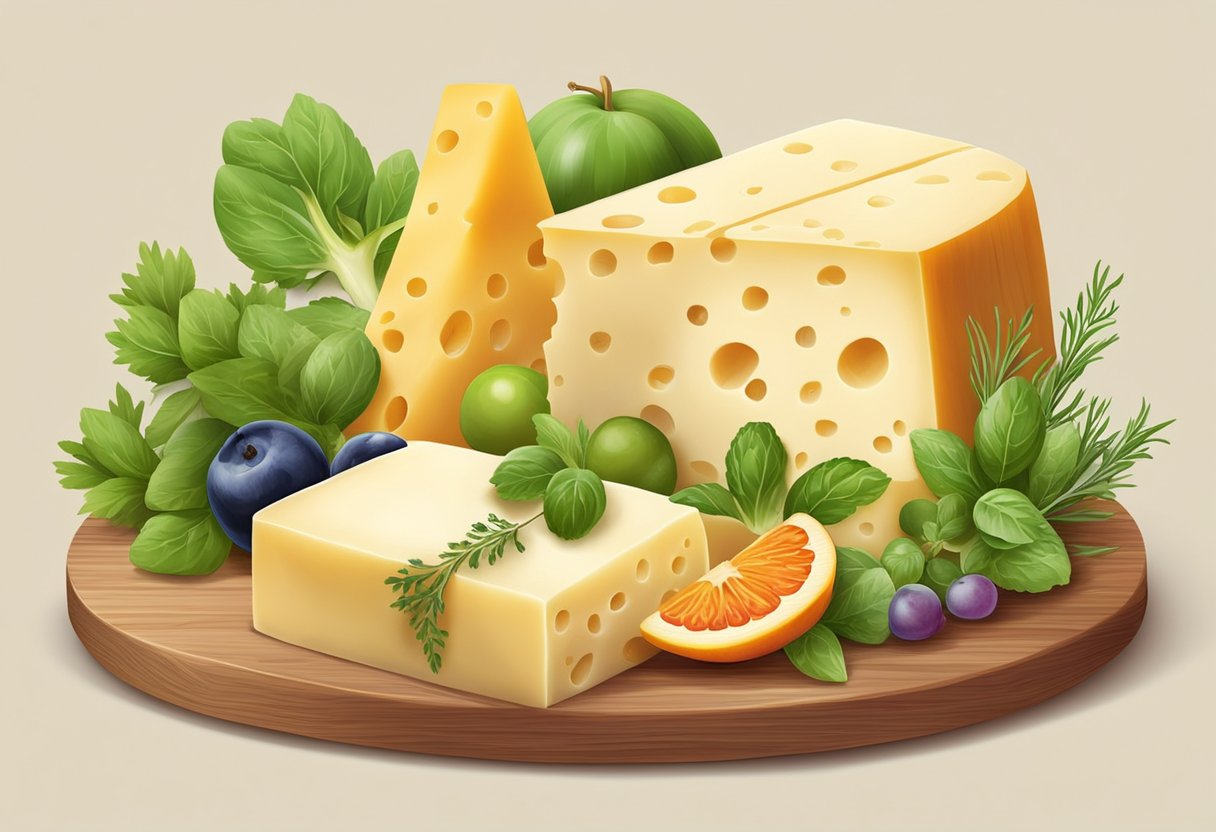
Fontina cheese, with its creamy texture and rich, earthy flavor, shines in a variety of culinary applications. It’s a go-to ingredient when we want to add a sense of indulgence and depth to our dishes.
Cooking with Fontina Cheese
Fontina’s excellent melting qualities make it a star in the kitchen. When using fontina cheese, we typically choose the semi-soft variety that melts well into pasta dishes and risotto. Its ability to blend into the creamy consistency required for a luxurious fondue is unmatched. Additionally, fontina’s creamy texture enhances baked dishes, where it contributes a lovely, velvety aspect.
Fontina in Classic Dishes
In classic Italian cooking, Fontina from Valle d’Aosta is often the cheese of choice. We embrace its pale yellow color and mild, yet distinctively nutty flavor in traditional dishes such as quiche and frittatas. For a quintessential Italian experience, it’s integrated into gratins alongside vegetables or used as a key ingredient in Italian-style grilled cheese sandwiches.
Pairings and Combinations
When considering pairings, we take advantage of Fontina’s mild earthiness and natural rind. It goes well on a charcuterie board, complemented by roasted nuts and a glass of Chardonnay or Cabernet Sauvignon. Fontina also pairs beautifully with fruits like apples and pears, enhancing the sweet flavor profile of these fruits.
| Pairing | Accompaniment |
|---|---|
| Wine | Chardonnay |
| Wine | Cabernet Sauvignon |
| Fruit | Apples |
| Fruit | Pears |
| Nut | Roasted Almonds |
| Nut | Walnuts |
In terms of combinations with other cheeses, Fontina can be mixed with Gruyere, Taleggio, or Provolone for a nuanced cheese blend in both cooked and raw preparations.
Substitutes for Fontina Cheese
For those who may not have access to Fontina, we can opt for substitutes such as Gouda, Provolone, or Mozzarella. These cheeses offer similar melting characteristics and can provide an adequate alternative:
- Mildness: Mozzarella, Provolone
- Nutty Flavor: Gruyère, Emmental
- Creaminess: Gouda
Each substitute brings its own unique properties to the table, but will still achieve a similar effect in terms of texture and melting qualities. Remembering to match the flavor profile to the original Valle d’Aosta Fontina will ensure the closest possible match.
In all culinary applications, we value Fontina for its adaptability and its singular ability to enhance a wide range of dishes with its signature Alpine touch.
Nutritional Profile and Health Considerations
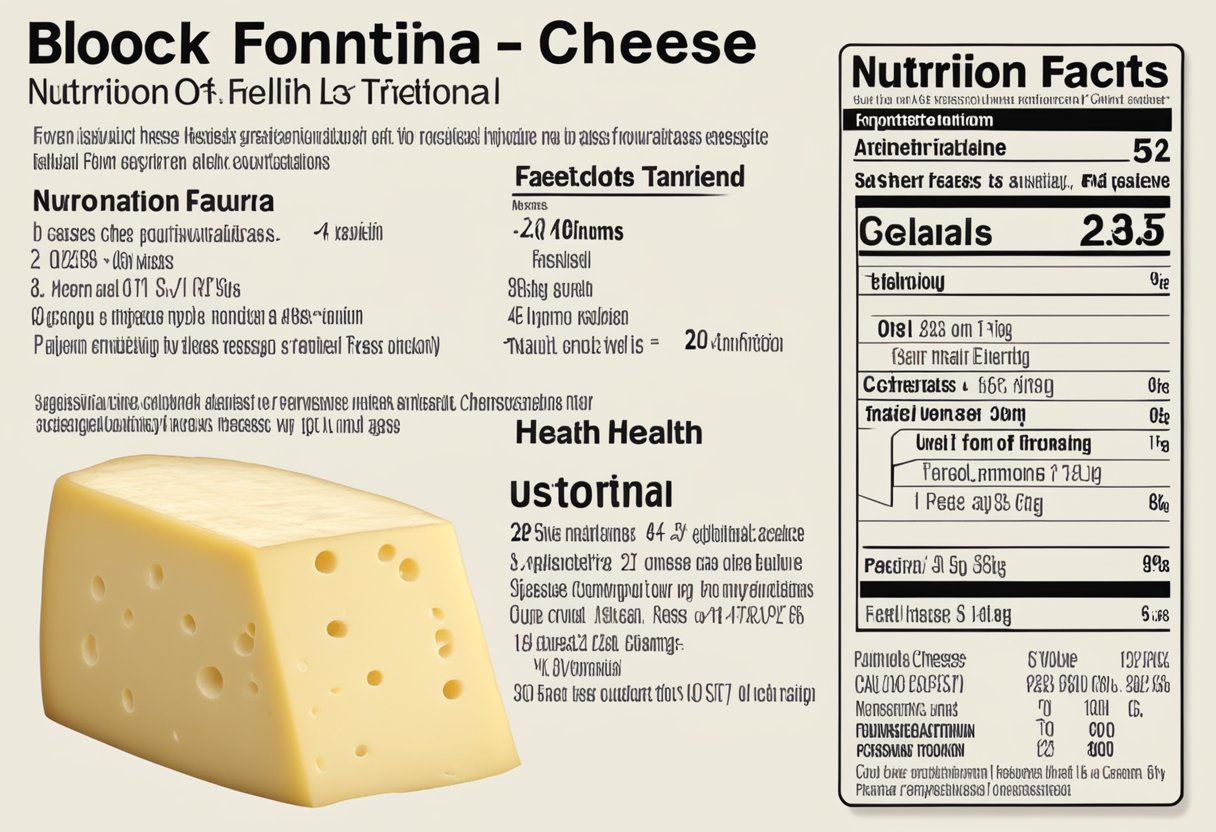
Fontina cheese is a nutrient-dense food that offers a good source of protein and calcium. However, it also contains fats and lactose, which may raise dietary concerns for certain individuals, including those with milk allergies.
Nutrients in Fontina Cheese
Fontina cheese is derived from cow’s milk and thus shares many nutritional attributes with other dairy products. We find that it is particularly high in protein and calcium, two essential nutrients for maintaining health. Here is a brief nutritional breakdown based on a one-ounce (28-gram) serving of fontina cheese:
- Calories: 100
- Protein: 7 grams
- Total Fat: 7 grams
- Saturated Fat: 4.5 grams
- Cholesterol: 30 mg
- Calcium: 200 mg
Additionally, fontina cheese provides smaller amounts of vitamins and minerals such as vitamin A, phosphorus, and zinc.
Dietary Concerns and Allergies
When considering fontina cheese as part of our diet, we account for its dairy content, especially if lactose intolerance or milk allergies are our concerns. Fontina cheese contains lactose, a sugar found in milk, which may cause digestive issues for lactose-intolerant individuals. For those with milk allergies, fontina cheese should be avoided due to the presence of milk proteins, which can trigger allergic reactions.
In terms of dietary fats, the saturated fat content in fontina cheese is notable and may warrant moderation in the context of a heart-healthy diet. To maintain balance, we may limit our portion sizes or seek lower-fat cheese alternatives if reducing saturated fat intake is our goal.
Storage and Preservation
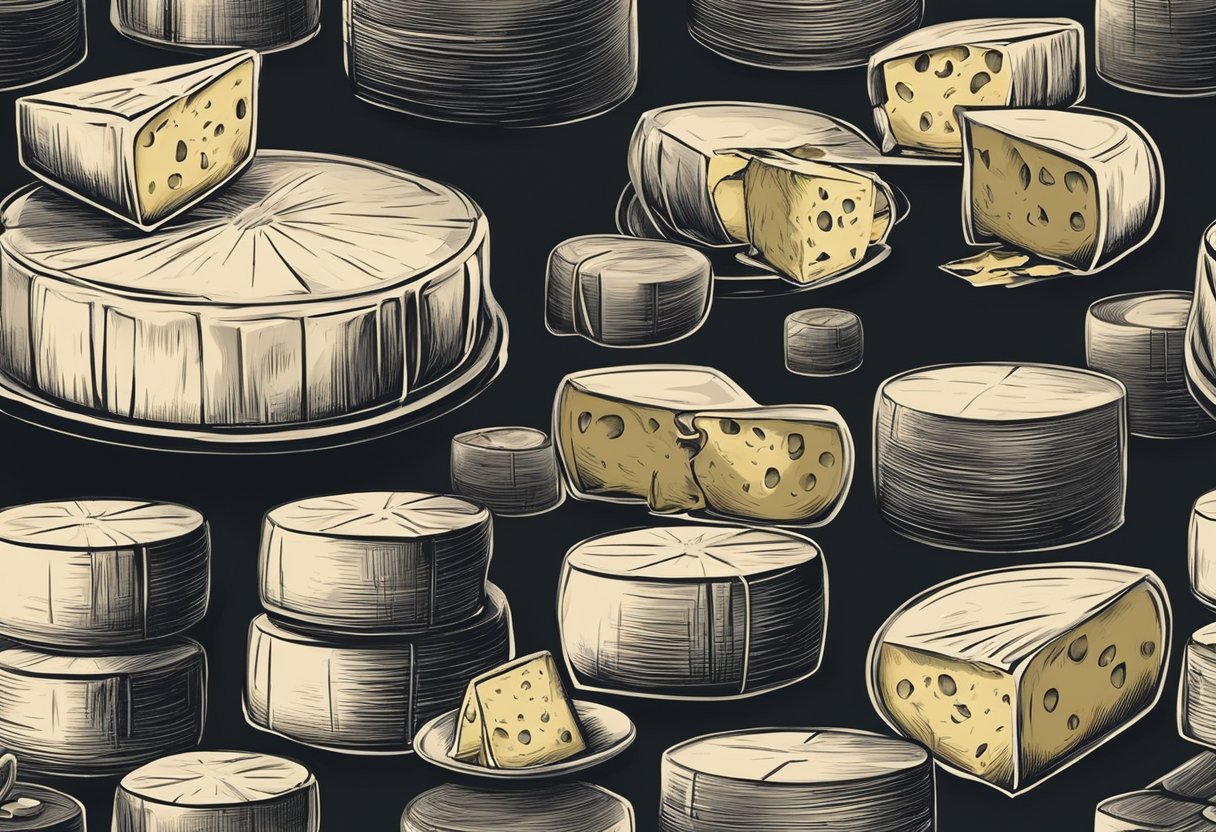
When storing fontina cheese, it’s essential that we maintain its quality by providing the right conditions. Our focus here is to ensure the longevity and flavor retention of the cheese.
Optimal Storage Conditions
Fontina cheese thrives in a cool, humid environment akin to the traditional aging caves where it matures. To replicate this:
- Temperature: Keep at 34°F to 40°F (1°C to 4°C) which is usually achievable in a standard refrigerator.
- Humidity: Aim for 85% to 95% relative humidity if possible. Specialty cheese storage containers can help maintain this environment.
- Airflow: Moderate airflow helps prevent mold, but avoid areas with strong, dry drafts.
- Position: Store wheels or pieces of fontina with the rind on, ideally in the lower sections of the fridge where temperature fluctuations are minimal.
Shelf Life and Spoilage
The life span of fontina cheese depends on how well it is preserved:
- Whole Wheels: If stored under optimal conditions, an uncut wheel of fontina can last for several months.
- Cut Pieces: Once cut, consume within three to four weeks to enjoy its peak quality.
- Signs of Spoilage: Look for any changes in texture, aroma, and the presence of unwanted mold on the rind, which can indicate that the cheese is past its prime.
By adhering to these storage guidelines, we can ensure our fontina cheese remains a flavorful and enjoyable addition to our culinary experiences.
Fontina Varieties and Related Cheeses

Fontina cheese, traditionally crafted in Italy, is celebrated for its creamy texture and earthy taste. With its DOP status in Italy, ensuring specific production norms, we find a wealth of varieties related to origin and production techniques.
European Variations
In the heart of Italy, Fontina cheese, with its semi-soft texture and pungent character, is a staple. The Italian Fontina Val d’Aosta, a DOP cheese, is aged for three months and has a robust, nutty flavor. Variations across Europe also include Danish and Swedish interpretations, which tend to be milder and softer. Both regions produce a slightly less pungent version compared to the Italian.
- Italian: DOP certified, semi-soft, with an earthy and nutty flavor.
- Danish: Softer, milder, and less pungent than its Italian counterpart.
- Swedish: Similar to the Danish variety, featuring a gentle, mild profile.
New World Interpretations
As Fontina made its journey to the United States, it carried its classic identity but adapted to new tastes. American Fontina is generally less pungent and more approachable with a creamy texture. It’s versatile and often used in a multitude of culinary applications from sandwiches to casseroles.
- United States: Creamier, less pungent, and versatile for various dishes.
Comparing Fontina to Other Cheeses
Fontina shares similarities with several other cheeses:
- Taleggio: An Italian cheese with a stronger aroma yet similar creamy characteristic.
- Gruyère and Gouda: Both possess sweet and nutty aspects, with Gruyère being more firm and Gouda showcasing a signature wax rind.
- Provolone: Less earthy than Fontina but shares its semi-soft, meltable qualities.
- Emmental: A hard cheese known for its holes, Emmental is sweeter and less earthy.
Local Cheese Traditions
As we consider local traditions, Italian cheeses from Northern Italy, where Fontina originates, often exhibit a profound earthy and nutty profile, reflective of the alpine pastures. Within France, we find hard cheeses like aged Fontina, boasting a deeper flavor due to an extensive aging process. Across these traditions, cow’s milk is the common starting point, each region imparting its unique terrain’s signature to the cheese.
Frequently Asked Questions
Fontina cheese is a versatile ingredient with distinctive characteristics. Below we answer some common queries regarding its use, flavor, substitutes, and nutritional content.
Can Fontina cheese be used on pizza effectively?
Yes, we can use Fontina cheese on pizza to lend a creamy and earthy flavor. It melts well, making it an excellent choice for a rich and gooey topping.
How does Fontina cheese differ from mozzarella in flavor and texture?
Fontina has a nutty and slightly tangy taste, while mozzarella is milder and milkier. In texture, Fontina is denser and more velvety, whereas mozzarella is more elastic and stringy when melted.
What are some good substitutes for Fontina cheese?
When we can’t find Fontina, good substitutes include Gouda, Gruyère, or provolone cheese. These alternatives offer a similar meltability and can mimic the creamy taste to some extent.
What is the flavor profile of Fontina cheese?
The flavor profile of Fontina cheese is rich and creamy with nutty, earthy undertones. It can also have hints of butter and a mild tanginess, which become more pronounced with age.
Is Fontina cheese typically made with pasteurized milk?
Fontina cheese can be made with either pasteurized or unpasteurized milk, though the traditional Italian Fontina, Fontina Val d’Aosta, is typically made with raw milk.
What is the lactose content of Fontina cheese compared to other cheeses?
Fontina cheese is often lower in lactose compared to fresher cheeses, due to the fermentation process. It’s typically better tolerated by those with mild lactose sensitivities.

